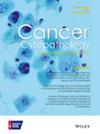Anal cytology represents a tool for anal cancer screening in high-risk populations. In addition to accuracy, the reproducibility of the interpretation is of key importance. The authors evaluated the agreement of anal cytologic interpretation between two cytopathologists.
Liquid-based cytologic slides from human immunodeficiency virus (HIV)-negative men who have sex with men (MSM) were evaluated by two readers with at least 10 years of expertise in cervical cytology. Cases with a discordant interpretation were reviewed, and a consensus was reached. Human papillomavirus (HPV) genotyping was performed using a proprietary HPV genotyping test. Unweighted and weighted Cohen kappa and 95% confidence interval (CI) values were calculated.
Overall, 713 slides that were adequate for interpretation were evaluated (MSM: median age, 33 years). An HPV test was performed on 620 samples (87.0%). Considering a dichotomous interpretation (negative for intraepithelial lesion or malignancy vs. atypical squamous cells of undetermined significance or worse), the crude agreement between the two readers was 93.3% (kappa = 0.82; 95% CI, 0.77–0.87). Once a consensus for discordant cases was reached, the best agreement was found for the negative for intraepithelial lesion or malignancy category (511 of 528 samples; 96.8%), whereas the atypical squamous cells of undetermined significance category showed the lowest agreement (90 of 117 samples, 76.9%). Considering the individual cytologic categories, overall agreement was 92.1% (kappa = 0.85; 95% CI, 0.81–0.89). The discordant interpretations were not associated with high-risk HPV infection, HPV16 infection, or MSM age.
The results indicating excellent interobserver agreement in this study substantiate the use of anal cytology in the setting of human immunodeficiency virus-negative MSM.


